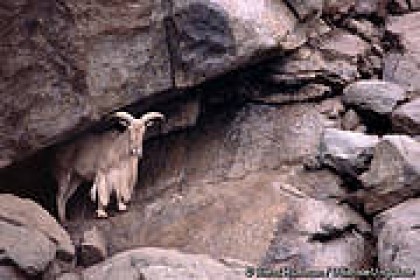
September 2014
 | September 2014 |
Barbary sheep on the edge of survival in North Africa | |
|---|---|
 A workshop was held on 27-29 May 2014 in Tunisia, aiming to address the current conservation situation of the Barbary sheep (Ammotragus lervia) in that country. The IUCN Centre for Mediterranean Cooperation, with the support of Tunisia's Forestry Department and the Ministry of Environment, organized the workshop to discuss and validate a strategic conservation plan for the species in Tunisia. The goal of this workshop was to discuss the current situation of this species with relevant stakeholders, to identify the main threats to its survival and their underlying causes, and to agree on conservation actions to reverse them. The 25 participants included people from government ministries and national and international NGOs, as well as scientific experts on the species. The two-day meeting was followed by a visit to Boukornine National Park. The Barbary sheep is a North African species that was formerly widespread in rugged and mountainous terrain from deserts and semi-deserts to open forests, but it has suffered a severe population decline due to poaching and competition from domestic stock. This species is a generalist herbivore which combines grazing with browsing, and it can survive without drinking water for long periods (even years). The species is listed as Vulnerable in The IUCN Red List of Threatened SpeciesTM. This was the first stakeholder workshop organized as part of the project ‘Improving capacities for species conservation in the Mediterranean region', which receives support from the MAVA Foundation, the Regional Government of Andalusia, and both the National Parks Agency and the Biodiversity Foundation of the Spanish Ministry of Agriculture, Food and Environment. Two more workshops are to take place in Morocco and Algeria to validate strategic conservation plans for the Great Bustard (Otis tarda) and the Barbary Macaque (Maca sylvanucas), respectively. The results will provide the national authorities with a route map to address the conservation of these threatened species, as well as a basis for continuing to work on the conservation of threatened species in general. For further information, please contact: Violeta Barrios | |